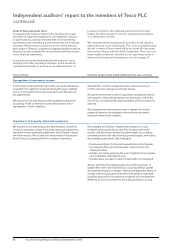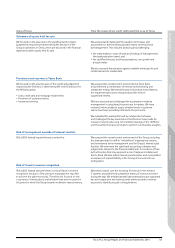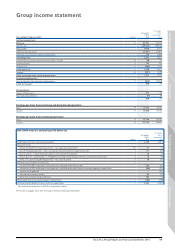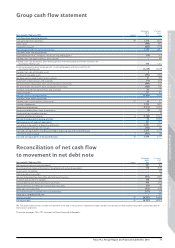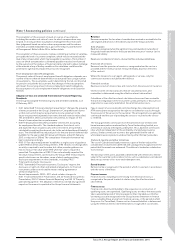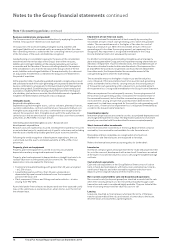Tesco 2014 Annual Report Download - page 69
Download and view the complete annual report
Please find page 69 of the 2014 Tesco annual report below. You can navigate through the pages in the report by either clicking on the pages listed below, or by using the keyword search tool below to find specific information within the annual report.
Area of focus How the scope of our audit addressed the area of focus
Recognition of commercial income
Commercial income (promotional monies, discounts and rebates
receivable from suppliers) recognised during the year is material
to the income statement and amounts accrued at the year end
are judgemental.
We focused on this area because of the judgement required in
accounting for the commercial income deals and the risk of
manipulation of these balances.
We tested the controls management has in place, focusing on
controls over price changes and margin reviews.
We agreed commercial income recognised to contractual evidence
with suppliers, with particular attention to the period in which the
income was recorded and the appropriateness of the accrual at the
year end.
We compared movements year on year in margins for product
categories based on an expectation derived from our sample
testing of contracts with suppliers.
Impairment of property, plant and equipment
We focused on this area because the determination of whether
or not an impairment charge for property, plant and equipment is
necessary involves significant judgements by the Directors about
the future results of the business and assessment of future plans
for the Group’s property portfolio in a number of territories.
We evaluated the Directors’ impairment calculations in local
territories, assessing the future cash flow forecasts used in the
models, and the process by which they were drawn up, including
comparing them to the latest Board approved budgets, and testing
the underlying calculations. We challenged:
• the key assumptions for long-term growth rates in the forecasts
by comparing them to historical results, and economic and
industry forecasts;
• the discount rate by assessing the cost of capital for the Company
and comparable organisations; and
• the alternative use value for land not expected to be developed.
We also performed sensitivity analysis around the key drivers of
growth rates of the cash flow forecasts, including revenue growth
and expected changes in margins. Having ascertained the extent of
change in those assumptions that either individually or collectively
would be required for the assets to be impaired, we considered the
likelihood of such a movement in those key assumptions arising.
Areas of particular audit focus
In preparing the financial statements, the Directors made
a number of subjective judgements, for example in respect
of significant accounting estimates that involved making
assumptions and considering future events that are inherently
uncertain. We primarily focused our work in these areas by
assessing the Directors’ judgements against available evidence,
forming our own judgements, and evaluating the disclosures
in the financial statements.
In our audit, we tested and examined information, using
sampling and other auditing techniques, to the extent we
considered necessary to provide a reasonable basis for us
to draw conclusions. We obtained audit evidence through
testing the effectiveness of controls, substantive procedures
or a combination of both.
We considered the following areas to be those that required
particular focus in the current year. This is not a complete list of
all risks or areas of focus identified by our audit. We discussed
these areas of focus with the Audit Committee. Their report on
those matters that they considered to be significant issues in
relation to the financial statements is set out on page 33.
66 Tesco PLC Annual Report and Financial Statements 2014
Independent auditors’ report to the members of Tesco PLC
continued












